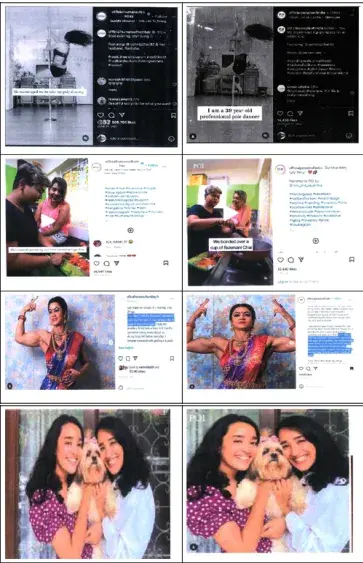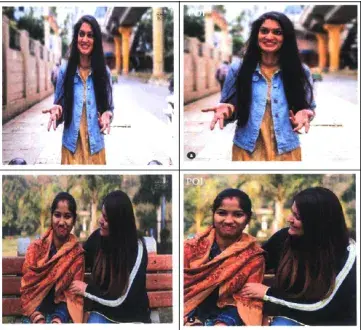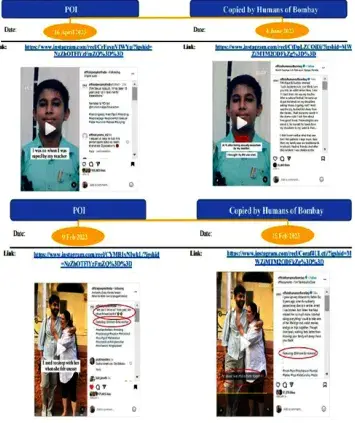By Pranit Biswas and Nitika Sinha
In one of the most discussed cases of the year 2023 Humans Of Bombay Stories Pvt. Ltd. V. POI Social Media Pvt. Ltd. & Anr.[1], the Hon’ble Delhi High Court has once again rationalized the Idea-Expression Dichotomy by keeping the copyright of story narration rights platforms to the bounds of its creative expressions.
This case has seized considerable attention from the very initial stage where the founder of Plantiff i.e., Humans of Bombay, Ms. Karishma Mehta was stipulated to publicly clarify its stand of filing the case of copyright infringement after receiving an online criticism from Mr. Brandon Stanton (Founder of Humans of New York) for commercializing his art of storytelling in the very first place.[2] Karishma has clarified the stand of filing the copyright infringement case against People of India only on the ground of substantial imitation i.e., plagiarism of its content and not on inspiration of its story telling business model.
Humans Of Bombay Stories Pvt. Ltd. V. POI Social Media Pvt. Ltd. & Anr.
The storytelling platform known as Humans of Bombay (HOB) had initiated legal action by filing a lawsuit for copyright infringement in the Delhi High Court against another storytelling platform named People of India (POI). The basis for initiating the current legal proceeding emerged in 2022, when the Plaintiff became aware that the defendant was operating an Instagram account (@officialpeopleofindia) which contained identical content (to that of the plaintiff’s content, including photographs and videos. Moreover, the individuals being interviewed were the same subjects whose narratives were previously published by the plaintiff. The plaintiff initiated legal proceedings before the Delhi High Court, requesting an injunction to be passed against the defendants due to alleged copyright infringement.
The plaintiff claims that the defendants have unlawfully used its content, which encompasses images, literary works, videos, and creative expressions that were previously published on its website and social media platforms.
HOB alleged that the works of POI exhibited significant resemblance to their storytelling techniques, and that POI utilized HOB’s creative material in a manner that was either direct or indirect, without obtaining proper authorization.
Contentions of the plaintiff
- That the defendants have engaged in the act of replicating and reproducing a substantial percentage of the content found on the website and copied a number of photos. Few of the photos are illustrated below[3] :
Story Narration Rights Only to Its Creative Expressions Plaintiff’s Content Defendant’s Content 

- That the Plaintiff does not assert any legal entitlement to operate a platform for storytelling. The Plaintiff asserts their entitlements under Sections 14 and 17 of the Copyright Act of 1957 with regards to the subsequent elements:
- photographs commissioned by the Plaintiff,
- literary works created of the interview/content appearing on the website of the Plaintiff,
- the manner in which the story of a particular subject is presented by the Plaintiff, which would qualify as a compilation,
- Videos, which are cinematographic works.
- That the Plaintiff’s objection to the Defendants’ operation of the platform www.peopleofindia.io would be alleviated if the Defendants refrain from imitating any content from the Plaintiff’s site.
Contentions of the Defendant
- That the presence of common images between the two websites and platforms may be due to the fact that the subjects of the said stories themselves may have provided these images to the Defendants.
- That the Plaintiff has also been involved in the act of replication, since they have reproduced specific photos from the third party website such as[4] :

- That several of the images, which the Plaintiff claims have been imitated, are not actual photographs of the Plaintiff. The images were previously disseminated on a third-party platform before the Plaintiff proceeded to publish them. Hence, with regard to the photographs sourced from third-party sites, it is not possible for copyright infringement to occur.
- That the plaintiff’s platform lacks uniqueness as there are other current platforms that share similarities in terms of their story-telling capabilities in India as well as in foreign countries such as Humans of Goa, Humans of Delhi, Humans of New Amsterdam etc.
- That platform of the Plaintiff’s, has been replicated from the original platform known as “Humans of New York”, introduced by Mr. Brandon Stanton which was established in November 2010.
Court’s observations
The central concept revolves around a platform for storytelling. The operation of such a platform cannot be subject to a monopoly. Nevertheless, it is important to note that these platforms, which serve as mediums for sharing narratives about different individuals or issues, often employ their own unique methods of communication and dissemination. These methods are integral to the overall expression conveyed by these stories. The aforementioned expression is eligible for protection under copyright law. Thus, the Court held that Humans of Bombay and People of India shall refrain from using each other’s copyrighted works i.e., commissioned photographs and literary works such as interview scripts and original pieces written authors on the respective platforms; videos that may have been commissioned by the platforms themselves, the manner of presentation of the stories published by the platforms in respect of a particular subject.
The court observed that while there is no copyright in an idea, but, if an expression of the same is copied it would lead to copyright infringement and further said that there cannot be a “monopoly” on running a storytelling platform (idea), however, “all such platforms ought to adopt their own creative expression to communicate such stories”.
Indian Judiciary’s take on Copyright protection of Creative Expression
The fundamental tenet behind the idea-expression dichotomy is that an idea per se cannot be protected by copyright. Navigating the realm of distinguishing between an idea and its expression is difficult due to the lack of a clear regulatory provision. While Indian copyright law does not explicitly provide for the idea-expression dichotomy, the rule got properly established in the Supreme Court’s landmark judgment of R.G. Anand v. M/S Deluxe Films & Ors, 1978[5]. It was held in this case that copyright does not apply to ideas, concepts, narratives, or historical facts. Infringement is based on significant similarities in the expression, which necessitates an unequivocal impression of reproduction. Notably, the court emphasized that adopting the same idea if expressed differently is permitted, because material distinctions prohibit copyright violation. This precedent is crucial in the Humans of Bombay case, where accusations of adopting similar business or content development ideas were in conflict. The R.G. Anand case emphasized the necessity for extensive duplication leading to a perception of indistinguishability for a case of infringement, meaning that running a comparable platform does not inevitably entail copyright infringement.
That said, the factor which likely is the deciding factor in this battle was the usage of the identical content (such as photographs) by People of India (POI).
Akansha Arora, Associate at S.S. Rana & Co. has assisted in the research of this Article.
[1] https://economictimes.indiatimes.com/magazines/panache/havent-received-a-penny-for-a-single-story-humans-of-new-york-founder-hits-back-at-humans-of-bombay-for-reducing-art-to-a-product/articleshow/103962624.cms
[2]https://www.scconline.com/blog/post/2023/09/23/delhihc-issues-notice-to-peopleofindia-portal-in-copyright-infringement-suit-by-humansofbombay-legal-news/
[3] CS(COMM) 646/2023 and I.A. 18038/2023-18042/2023
[5] R.G. ANAND V. M/S DELUXE FILMS & ORS, 1978 AIR 1613
Related Posts


